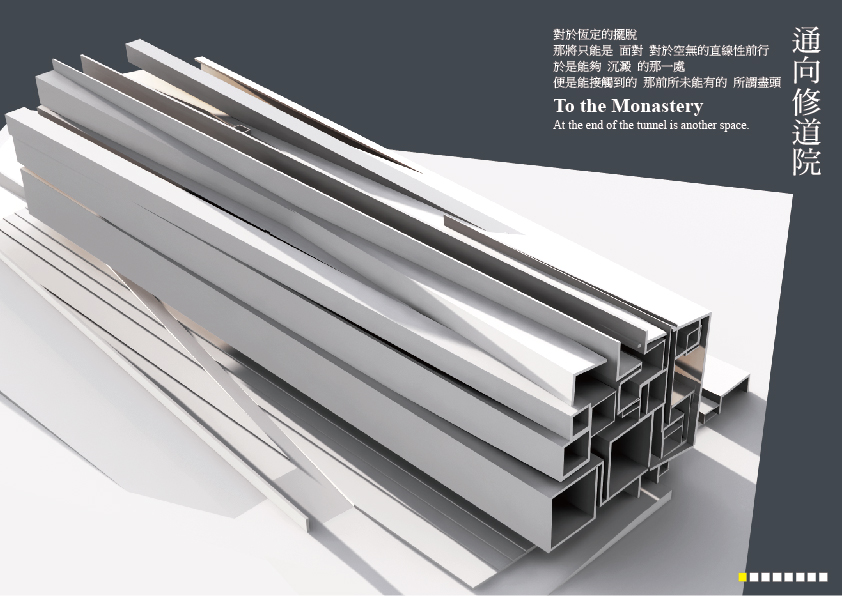
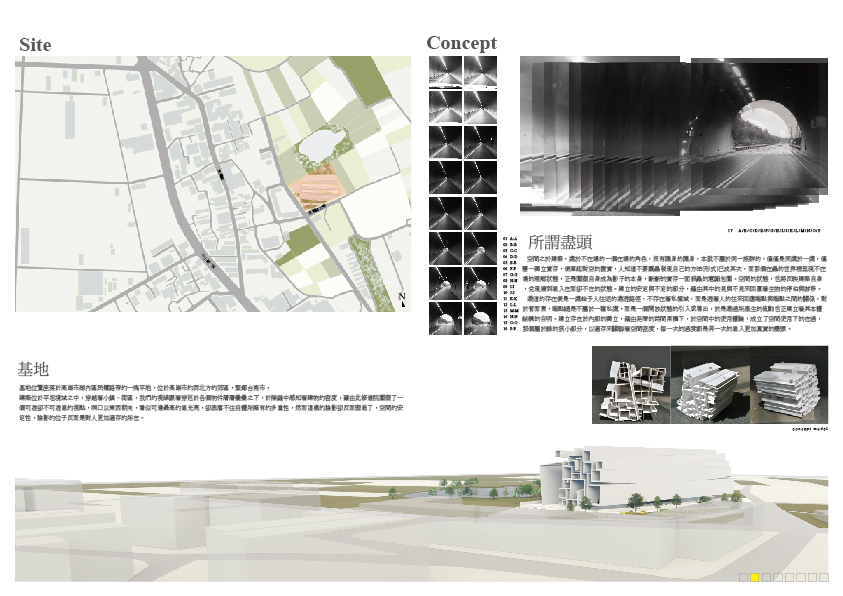
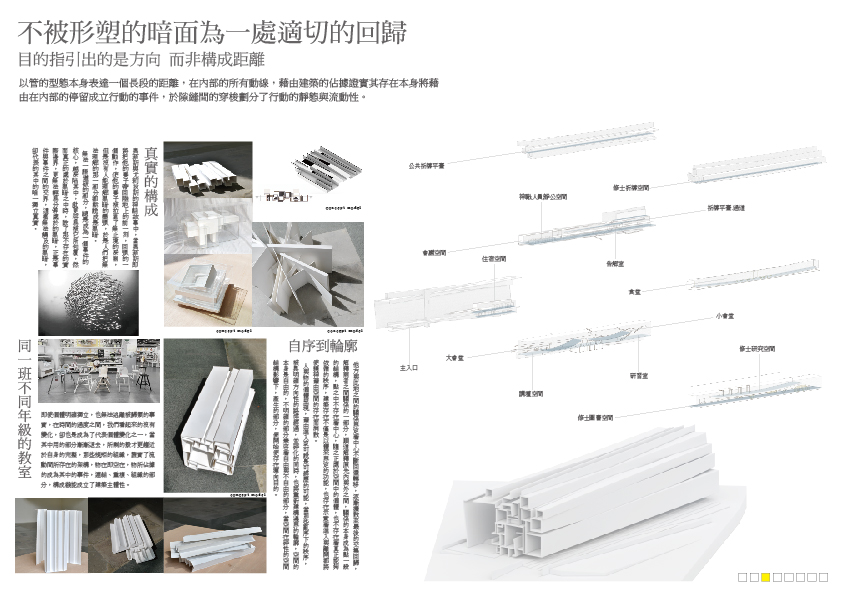
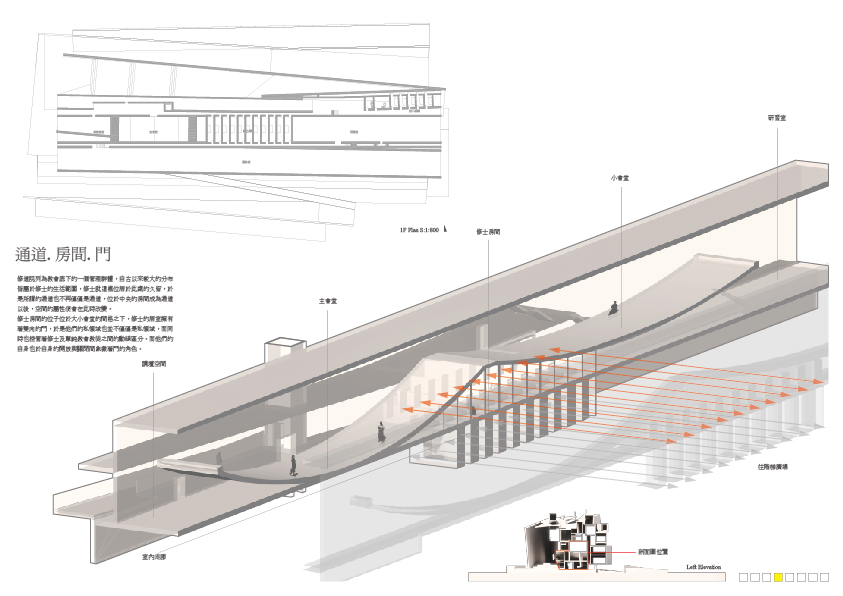
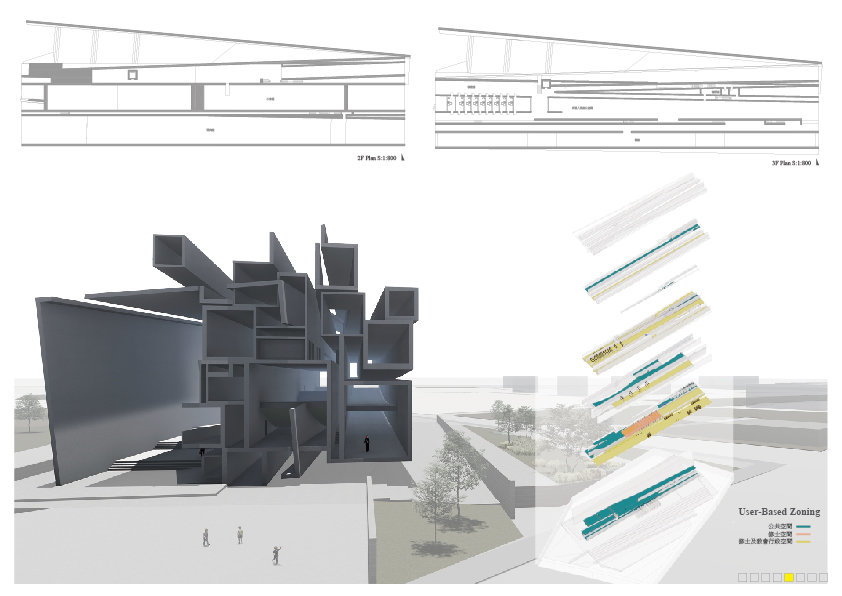
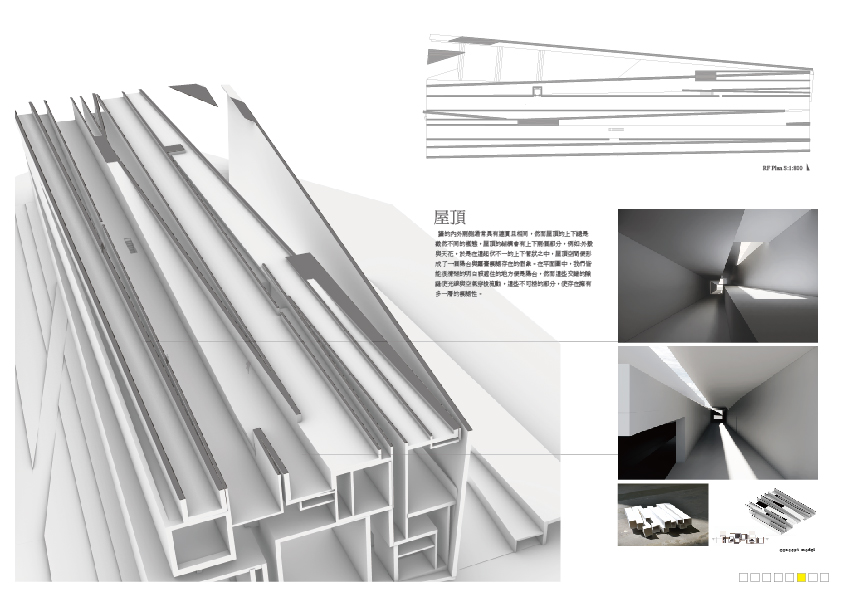
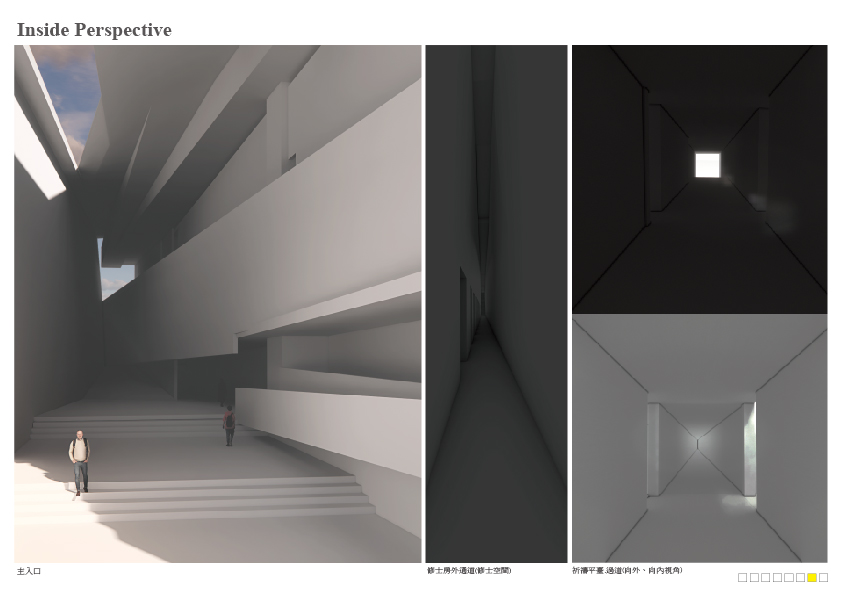
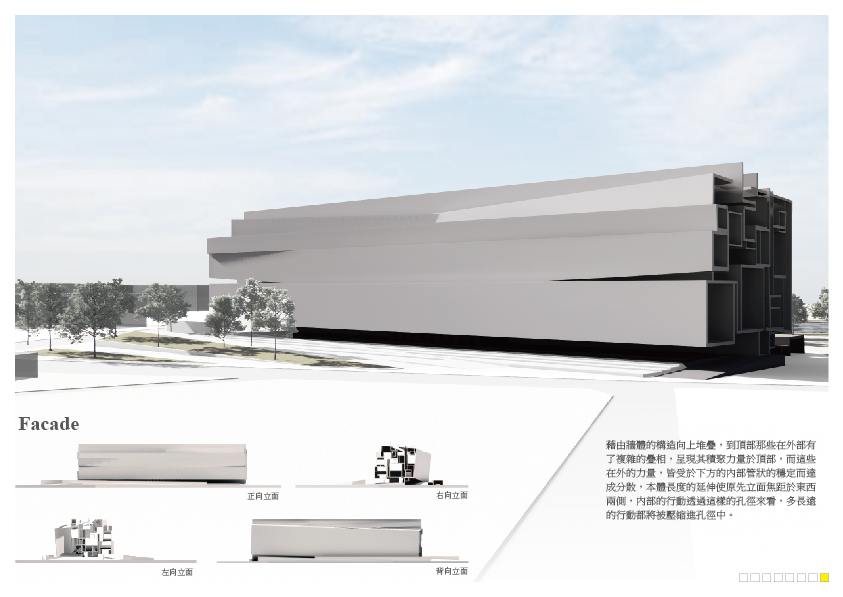
對於恆定的擺脫,那將只能是 面對 對於空無的直線性前行,於是能夠 沉澱 的那一處,便是能接觸到的,那前所未能有的盡頭。
以管的型態本身表達一個長段的距離,在內部的所有動線,藉由建築的佔據證實,其存在本身將藉由在內部的停留成立行動的事件,於隙縫間的穿梭劃分了行動的靜態與流動性。藉由牆體的構造向上堆疊,到頂部那些在外部有了複雜的疊相,呈現其積聚力量於頂部,而這些在外的力量,皆受於下方的內部管狀的穩定而達成分散,本體長度的延伸使立面視覺焦距於東西兩側,內部的行動透過這樣的孔徑來看,多長遠的行動都將被壓縮進孔徑中。
修士的房間在設計中成為了一處看似受個人意志管控的私領域,這裡的房間是被重新定位過的通道,藉由居住於內部的修士,管控著修道院的公私領域。
To get rid of the constant, one can only move forward in a straight line facing the emptiness, so the place where one can settle is the one that can be touched, the unprecedented end.
The shape of the tube itself expresses a long distance. All the moving lines inside are confirmed by the occupation of the building. Its existence itself will establish an event of action by staying inside, and the shuttling between the gaps divides the static and fluid nature of the action. The wall structure is stacked upwards, with complex overlaps on the outside at the top, showing the accumulated power at the top. These external forces are dispersed by the stability of the internal tubular structure below. The extension of the main body length makes the visual focus of the facade on the east and west sides. The internal actions are viewed through such an aperture, and no matter how long the actions are, they will be compressed into the aperture.
The monks' rooms are designed to be a private area that seems to be controlled by personal will. The rooms here are repositioned passages, and the public and private areas of the monastery are controlled by the monks living inside.